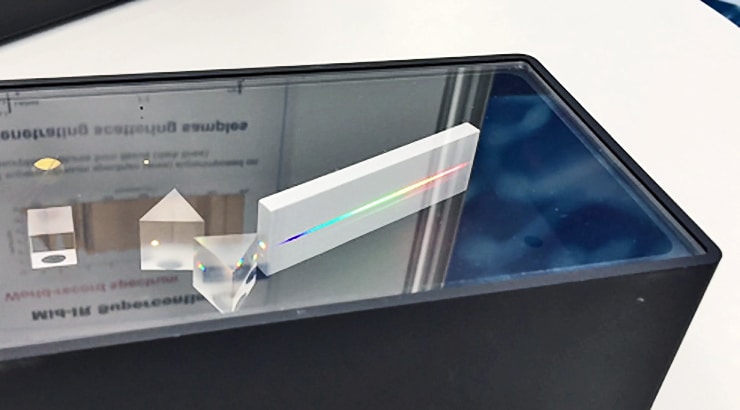Researchers have used a supercontinuum laser to analyze whole grains with long near-infrared wavelengths.
The research has significance for our knowledge of food ingredients and may, for example, eventually lead to better quality of bread and beer.
Technologically, the supercontinuum laser has undergone extensive development since the turn of the century due to the development of the photonic crystal fibers on which the laser is based.

“The supercontinuum laser has made it possible to measure very small objects rapidly and with high energy. A supercontinuum instrument can therefore potentially be used to measure whole grains and thus find grains with, for example, fungal or insect attacks, or to sort grains by baking, health, or quality parameters,” says Tine Ringsted, a postdoc at the food science department at the University of Copenhagen.
By measuring each grain you can more accurately observe the variation that naturally exists among grains from the same field and even from the same straw. The non-destructive and rapid measurement of individual grains can therefore be used in plant breeding to find desirable properties or in industrial grain sorting to increase quality.
A possible industrial application could be to measure the content of the dietary fiber beta-glucan. Beta-glucan in barley and especially oats has health-promoting properties such as lowering of serum cholesterol, increased satiety, and stabilization of blood sugar and insulin levels after meals.
Conversely, in the brewing industry, they are not interested in high concentrations of beta-glucan, as it can clog filters and create a cloudy precipitate in the finished beer called “grandmother’s cough.”
Measurements on barley flour and barley discs have previously shown some information rich wavelengths, but it has not been possible to measure through the barley grains at these long near-infrared wavelengths due to not having enough energy from the traditional spectrometer lamp.
“The supercontinuum laser’s collimated light beam with high energy meant that we could measure through the entire barley grain at the information-rich wavelengths. By using multivariate data analysis (chemometrics) we could generate a mathematical regression model that could predict beta-glucan content from 3.0-16.8 percent in barley grains with a margin of error of 1.3 percent beta-glucan,” explains Ringsted.
Want better beer? Use this protein
“A seed sorting will mean that you can obtain some grains that have health-promoting properties for use in bread, for example, and some grains that are extra good for beer. This will give both products a higher value without doing anything, but sorting the grains,” says Ringsted.
Ringsted believes that food analysis with supercontinuum lasers will become a new breakthrough in the food industry, but that it will take some years because the development is based to a high degree on interdisciplinary research, where needs and technology have to fit together.
“It is one thing, for example, to have an instrument that can measure very rapidly and provide accurate answers, but in order for it to be practical, you must also have a sample holder that allows you to measure a large number of grains in a short time,” explains Ringsted. He adds that there is already a Swedish company (BoMill), which has developed a sample holder that can handle three tons of grains per hour, but they measure the grains at shorter and less informative wavelengths.
Measurement of beta-glucan in barley grains is just one example of how a supercontinuum laser can be used. In addition to single grain measurements, the Light & Food project has also examined the supercontinuum laser used in a new robust spectrometer that can potentially measure many places in a food production system. For example, this could be used in the dairy or brewing industry to follow a product from start to finish.
In addition, there is a theoretical potential for using the supercontinuum laser for the rapid measurements of gases—for example, aroma compounds or ethylene which act as a gaseous plant hormone from ripening fruits.
New sour beer could be good for your gut
Overall, near-infrared spectroscopy allows for measuring more often and non-destructively compared to traditional wet chemical analyses.
“A supercontinuum laser provides even more options for food measurements, so it offers great potential for improving the quality of our food in the future,” says Ringsted.
The research findings appear in the journal Analytica Chimica Acta.
Source: University of Copenhagen



